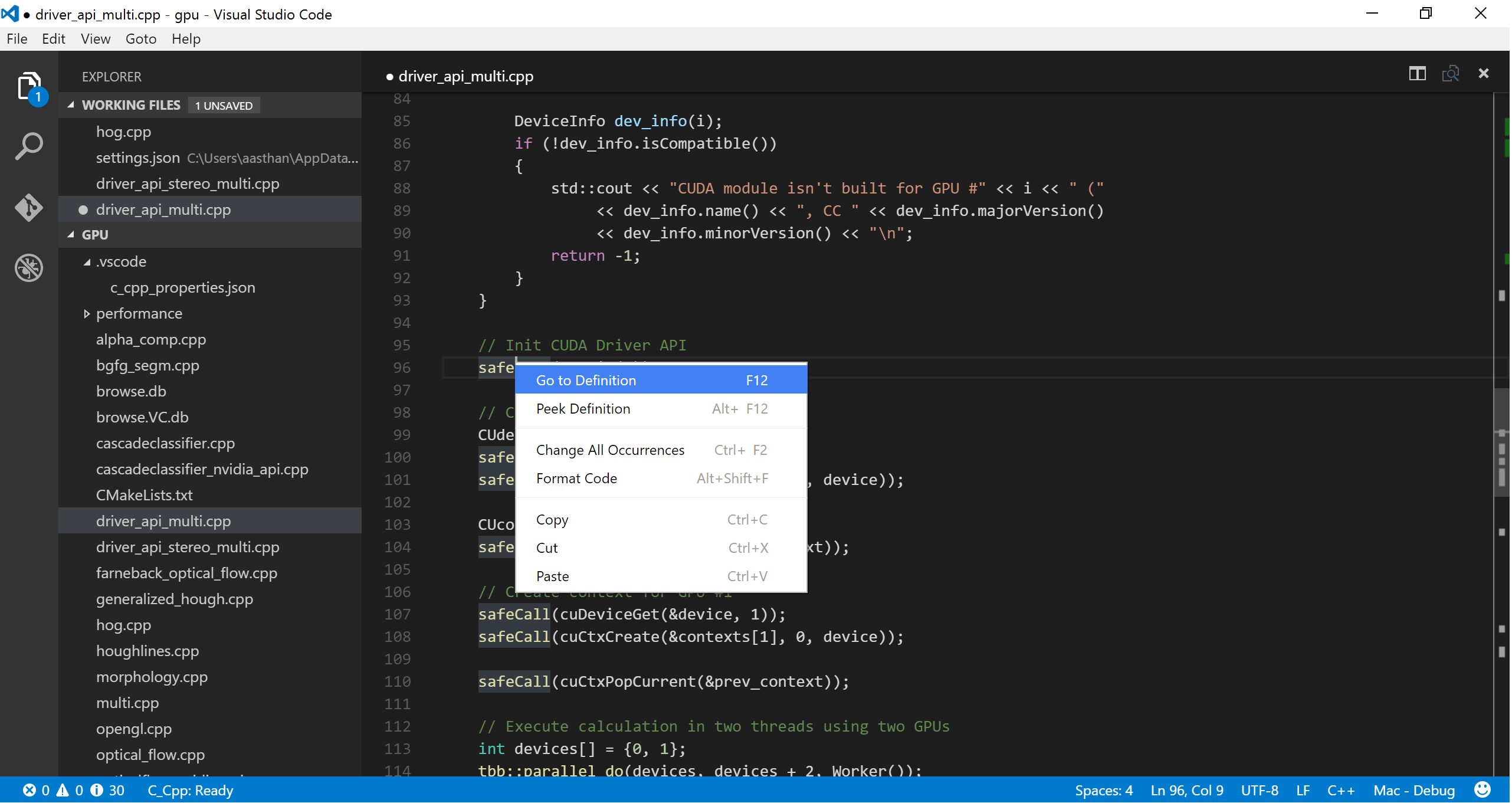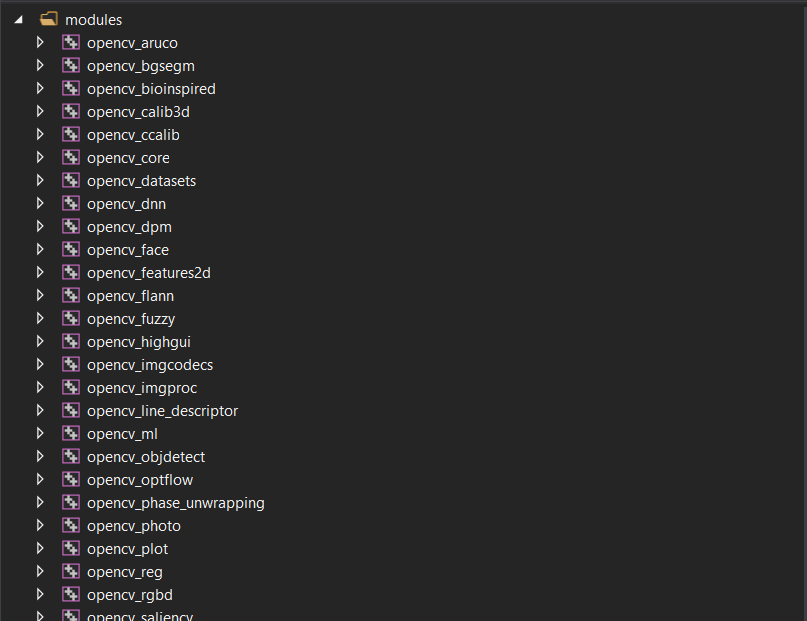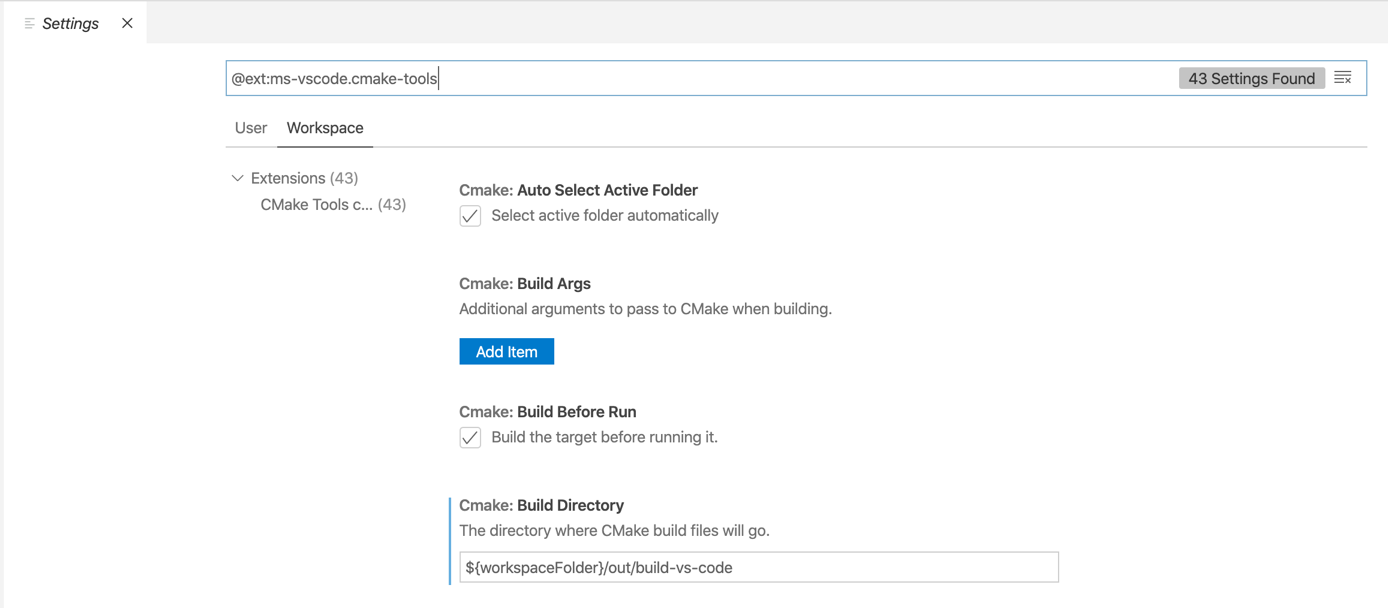
- #Opencv 310 visual studio code tutorial how to#
- #Opencv 310 visual studio code tutorial install#
- #Opencv 310 visual studio code tutorial update#
- #Opencv 310 visual studio code tutorial driver#
- #Opencv 310 visual studio code tutorial free#
#Opencv 310 visual studio code tutorial install#
$ sudo apt-get install libopenblas-dev liblapack-dev $ sudo apt-get install build-essential cmake

#Opencv 310 visual studio code tutorial update#
To get started, let’s install our required dependencies: $ sudo apt-get update The following instructions were gathered on Ubuntu 16.04 but should work on newer versions of Ubuntu as well. Type "help", "copyright", "credits" or "license" for more information.įigure 1: Successfully installing dlib on macOS. įrom there, fire up a Python shell and validate your install of dlib: (dlib_test) DU481:~ admin$ python Similarly, if you are utilizing Python 3, replace pip with pip3. If you are using Python 2.7, use pip2 instead of pip.

If you are not using Python virtual environments you’ll need to update the pip command to either pip2 or pip3.
#Opencv 310 visual studio code tutorial how to#
To learn more about Python virtual environments (and how to use them) please consult my OpenCV install tutorials where they are covered extensively.įrom there, we can install NumPy (dlib’s only Python dependency) followed by the dlib library itself: $ pip install numpy Using a Python virtual environment is entirely optional but highly recommended as Python virtual environments are a best practice for Python development. If you are using a Python virtual environment (if you followed any of my OpenCV install tutorials, you likely are using them), you can either create a new Python virtual environment for the dlib install: $ mkvirtualenv dlib_test -p python3 Next, let’s prepare our Python environment. The name is true for pip as well: we now use pip2 and pip3. Instead, we need to explicitly supply the Python version number. In older versions of Homebrew, Homebrew would automatically alias the python command to either Python 2.7 or Python 3 - this is no longer the case. This is due to how Homebrew now handles Python installs. Notice how we are not executing just python - instead we are explicitly supplying the version as well. The second key point to investigate is the Python binary itself: python2 and python3. We want to avoid using the system Python install so if you see /usr/bin instead of /usr/local/bin then it’s most likely due to an error updating your ~/.bash_profile (make sure you go back and ensure the file has been updated properly this could require manually opening and editing the file). If your root path instead reads /usr/bin then you are utilizing the system Python install. The first is that you want to ensure the root path for both Python binaries are in /usr/local/bin - this is where Homebrew stores the Python binaries. There are two key points you need to pay attention to here. You can verify that Python 2.7 and Python 3 have been successfully installed by using which : $ which python2

We’ll then install cmake (a utility used for building, testing, and packaging software) along with Python 2.7 and Python 3: $ brew install cmake You then need to source the ~/.bash_profile file to reload the changes: $ source ~/.bash_profile $ echo "export PATH=/usr/local/bin:$PATH" > ~/.bash_profile or simply using echo and redirection: $ echo -e "\n# Homebrew" > ~/.bash_profile

This can be accomplished by manually editing the file using an editor such as nano, vi, etc. Once Homebrew is installed you need to update your PATH to look for Homebrew binaries, packages, and libraries. Note: Make sure you use the “” button in the code block above to expand section - this will ensure you copy and paste the entire Homebrew install command. If not, please take the time to open the App Store and install XCode.įrom there, you’ll need to install Homebrew, a package manager for macOS, similar to Debian/Ubuntu’s apt-get : $ ruby -e "$(curl -fsSL )" I’ll assume you already have XCode installed on your macOS machine.
#Opencv 310 visual studio code tutorial driver#
Once you have installed dlib on your respective operating system we’ll validate the install by using Python, dlib, and OpenCV ( provided you have OpenCV installed as well), to detect facial landmarks.įrom there, I have provided additional tutorials and guides to help apply dlib to computer vision and machine learning projects, including detecting and counting blinks and building a system to recognize when the driver of a vehicle is becoming drowsy/tired (and alerting them to wake up).
#Opencv 310 visual studio code tutorial free#
Please feel free to skip to the section that corresponds to your operating system. In this guide you’ll learn how to install dlib on macOS, Ubuntu, and Raspbian. Looking for the source code to this post? Jump Right To The Downloads Section Install dlib (the easy, complete guide)


 0 kommentar(er)
0 kommentar(er)
